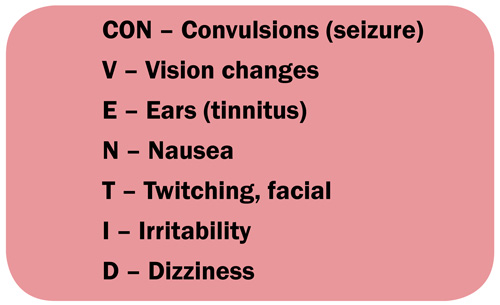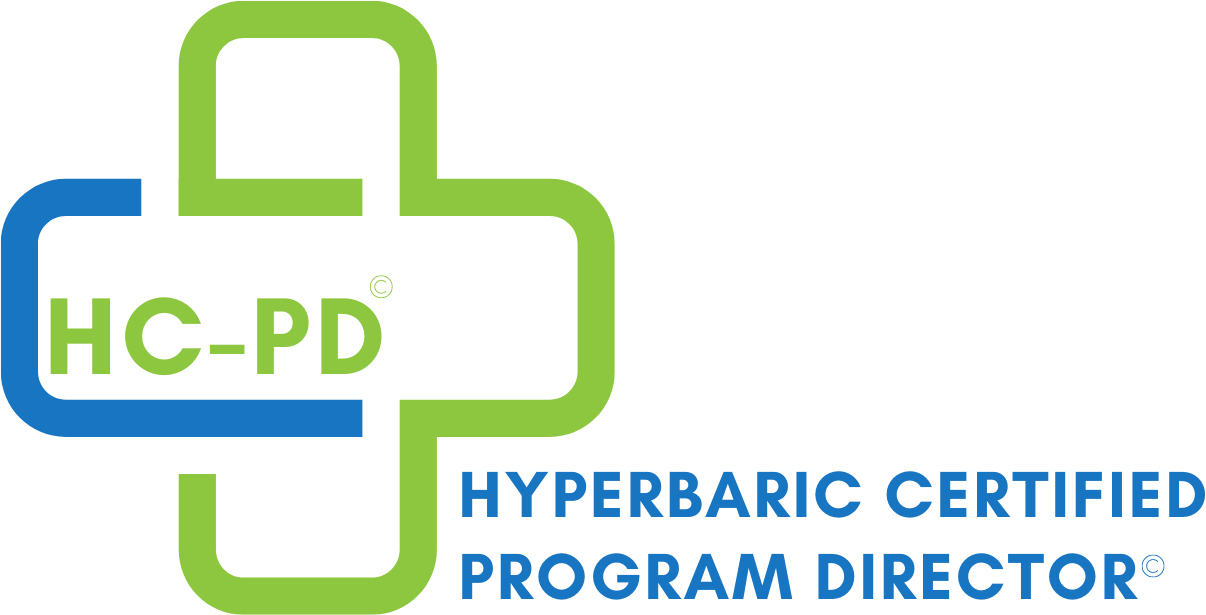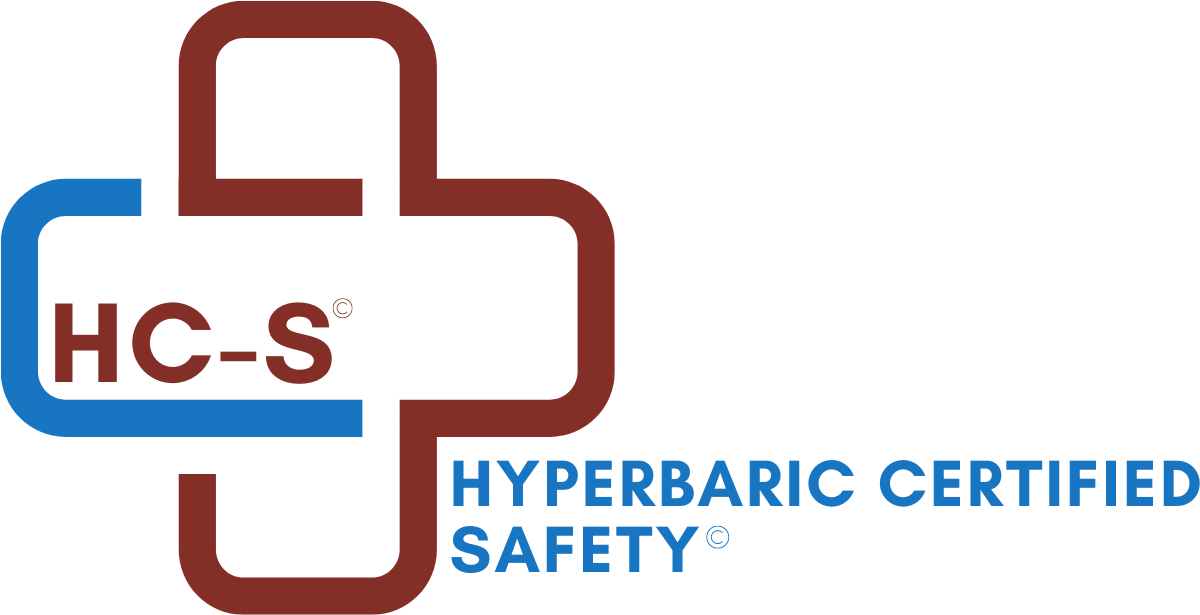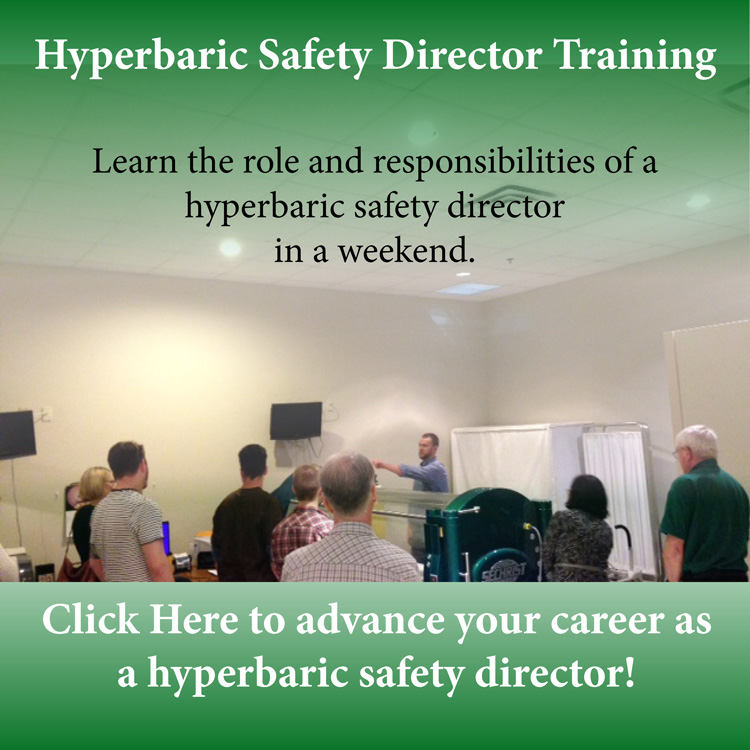Rx Pad
Air Breaks During Hyperbaric Treatment by Darren Mazza, EMT, CHT
When treating patients with hyperbaric therapy in the monoplace chamber using 100% oxygen, the supervising hyperbaric physician may order air breaks to be provided to the patient at certain intervals during the treatment.
What is an air break? During a typical air break, the patient will be instructed to breathe medical air from a mask at certain intervals  during the treatment for around five minutes at a time, depending on the provider’s written order. In my past working as an EMT, any time we had a patient with an inhalation injury such as from smoke inhalation or exposure to chemical fumes, the primary treatment guideline was to immediately get the patient on high flow oxygen and into a clean air environment. A saying we used to use was “the solution to pollution is dilution.” When providing air breaks to a patient, you dilute the oxygen concentration the patient breathes in the chamber from 100% down to around 21% via demand valve mask. This switch to air will in turn reduce the risk of CNS oxygen toxicity by giving the patient a break from the 100% oxygen concentration in the chamber. The use of air breaks during treatment is dependent upon two key CNS oxygen toxicity potentiating factors: treatment depth/time and predisposing factors noted in the patient’s medical history.
during the treatment for around five minutes at a time, depending on the provider’s written order. In my past working as an EMT, any time we had a patient with an inhalation injury such as from smoke inhalation or exposure to chemical fumes, the primary treatment guideline was to immediately get the patient on high flow oxygen and into a clean air environment. A saying we used to use was “the solution to pollution is dilution.” When providing air breaks to a patient, you dilute the oxygen concentration the patient breathes in the chamber from 100% down to around 21% via demand valve mask. This switch to air will in turn reduce the risk of CNS oxygen toxicity by giving the patient a break from the 100% oxygen concentration in the chamber. The use of air breaks during treatment is dependent upon two key CNS oxygen toxicity potentiating factors: treatment depth/time and predisposing factors noted in the patient’s medical history.
- Treatment depth/time: Studies have shown that CNS oxygen toxicity occurrences are 1.3 in 10,000 patients at treatment depths >2.0 ATA.
- Prior medical history: Patients with hyperthyroidism or who are CO2 retainers are at greater risk for CNS oxygen toxicity due to vasodilation in the brain. Seizure disorders and certain medications, such as epinephrine and steroids, may also increase susceptibility. It is important to be aware of the signs and symptoms of CNS oxygen toxicity, which are represented in the below acronym.
Keep in mind that any of these symptoms can occur at any time, and the patient may only present with one of the symptoms such as nausea, dizziness, or even irritability. This is why it is essential to observe the patient during the entire hyperbaric treatment. I have found that the more I observe each patient during the course of the treatment, the easier it is for me to notice any changes in his or her demeanor, such as increased irritability. At the first sign of any symptoms of CNS oxygen toxicity during a hyperbaric treatment, the patient will be instructed to breathe from the mask while being brought to surface, and treatment will be aborted. If the patient begins to have a seizure, the treatment depth would not change until the provider determines the patient to be in a postictal state.
When providing patients with instruction on the use of the air break equipment, it is extremely important that they demonstrate competency in using the equipment so they can adequately provide themselves with an air break during treatment. Before every treatment, I instruct the patient to take two breaths from the air break line and mask and confirm two things: that the mask provides an adequate seal and the regulator provides proper air flow, allowing the patient to breathe freely with no resistance. Occasionally, when a patient is instructed to begin an air break, the patient places the mask carelessly without providing a proper seal to their mask. Risk of oxygen toxicity to the patient will be increased if they are not properly utilizing the equipment by sealing the mask and breathing appropriately from the regulator. Again, it is important to observe the patient during treatment to ensure the correct use of the equipment and to note any changes in demeanor that may point to possible CNS oxygen toxicity.
Final Note
Keeping patients safe during their hyperbaric treatment is my absolute focus; in the hyperbaric environment there is no room for complacency. Providing proper education to a patient about possible risks that may occur during treatment and corresponding safety guidelines will encourage the patient to become proactive in his or her care and understand the importance of correctly using equipment, such as air break equipment, during treatment.
About the Author
Darren Mazza is the CHT and Safety Director at the Center for Wound Healing and Hyperbarics at Swedish/Edmonds, located in the greater Seattle area. He has 20 years of experience in healthcare, which includes 8 years as an EMT in the greater Sacramento region. Darren also worked as a preceptor trauma tech in a Sacramento hospital for several years. After leaving California and moving to Idaho in 2005, his hyperbaric career began after becoming the department head of an outpatient wound care and hyperbaric center. His hobbies include fly fishing.
Reference: This article was first published in Wound Care & Hyperbaric Medicine (WCHM) magazine V6 I2. WCHM is the world's only free, digital magazine covering the topics of wound care, undersea and hyperbaric medicine. Click here to read the full magazine.
Now it's your turn! What has been your experience with air breaks and CNS oxygen toxicity? Your experience can help others learn and grow. Tell us in the comments below.
Get More Free Resources!
Enter Your Name and Email Below to Get Resources and Tips for Advancing Your Career as a Hyperbaric Safety Director!
Ready to Learn More About Hyperbaric Safety Right Now?
We invite you to consider enrolling in the course called, Introduction to the Role of Hyperbaric Safety Director. This 16-credit hour, live classroom course will give you a full orientation to the facility safety responsibilities and standards as defined by the NFPA, UHMS and other organizations.
CLICK HERE for more details about the Introduction to the Role Hyperbaric Safety Director course
When you subscribe to the blog, we will send you an e-mail when there are new updates on the site so you wouldn't miss them.




Comments 1
Thanks for sharing great information about pressure in hyperbaric chamber healing. Hyperbaric therapy has really helped me for recovering injury and for this thanks Shai Efrati